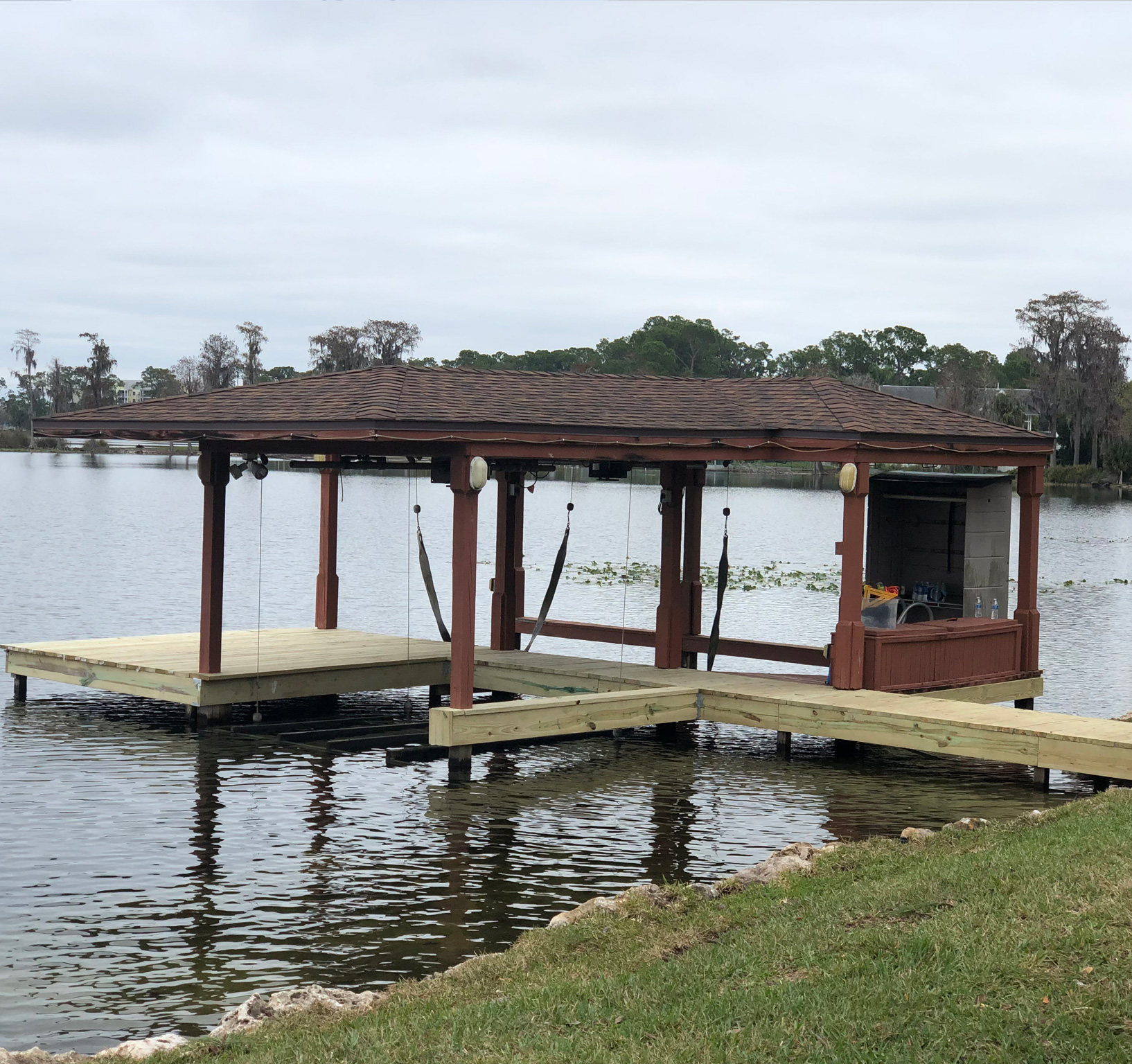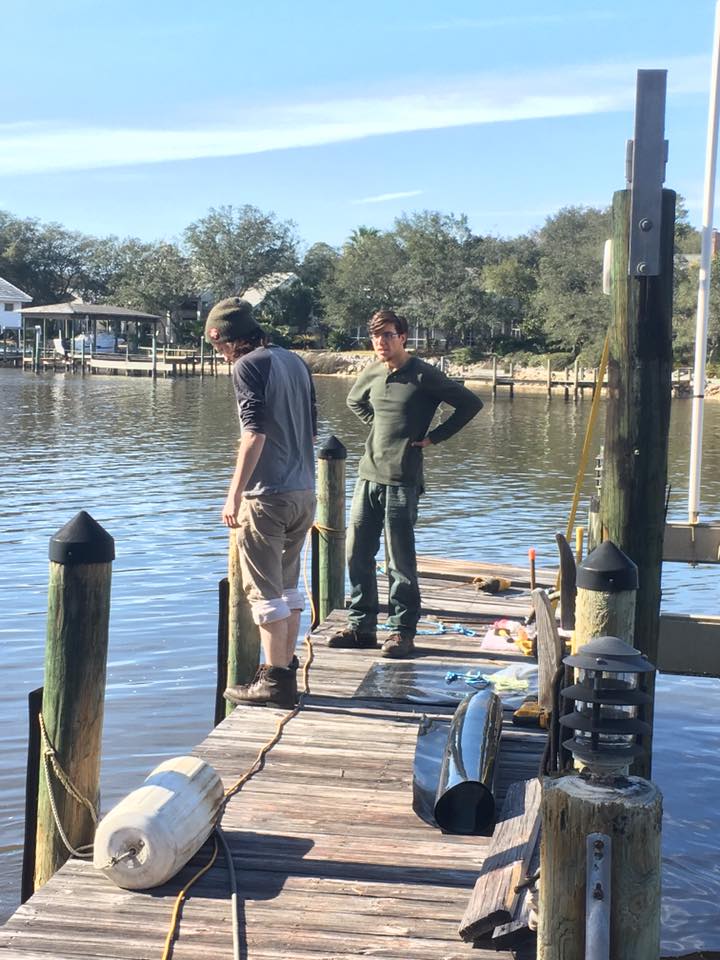Expert Insights on Long-Lasting Dock Repairs Solutions
Expert Insights on Long-Lasting Dock Repairs Solutions
Blog Article
Reliable Dock Repair Work Techniques: Ensuring Architectural Integrity
Guaranteeing the structural honesty of anchors via reliable repair strategies is paramount for the longevity and safety and security of aquatic facilities. Ultimately, choosing the best repair materials, such as corrosion-resistant alloys and composite products, is critical for durability.
Evaluating Dock Damage
Assessing dock damage is a vital initial step in making certain the architectural honesty and safety and security of any kind of docking facility. This initial assessment involves a comprehensive inspection to recognize both covert and noticeable damages. Key aspects to check out include the dock's structure, pilings, outdoor decking, and equipment. Each component must be scrutinized for signs of wear, rot, corrosion, or other types of deterioration that might endanger the architectural integrity.
Structural engineers or certified inspectors commonly carry out these evaluations making use of specialized methods and devices. Underwater evaluations might employ finder devices or remotely operated lorries (ROVs) to find immersed damage. Over water, aesthetic assessments are matched by utilizing dampness meters and various other diagnostic devices to discover underlying concerns not instantly noticeable to the nude eye.

Picking Repair Service Products
Selecting the appropriate repair products is an essential step in the dock restoration procedure, one that directly influences the long life and efficiency of the repaired framework. Product selection have to be driven by variables such as ecological conditions, load-bearing needs, and compatibility with existing dock parts.
In addition to wood, composite products are progressively popular as a result of their durability and reduced maintenance needs. Compounds, normally made from a blend of plastic and timber fibers, provide excellent resistance to rot, pests, and UV damage. For steel docks, choosing corrosion-resistant alloys such as galvanized steel or marine-grade light weight aluminum is important to avoid rust and make sure structural stability in saline water conditions.
Epoxy materials and marine-grade sealants are crucial for fixing cracks and sealing joints, giving a waterproof barrier and boosting the dock's total strength. By thoroughly picking top quality products, dock fixings can achieve resilient outcomes, therefore protecting against future deterioration and making certain safe, reputable usage.
Architectural Reinforcement Techniques
Efficient architectural support strategies are critical in ensuring the stability and durability of dock repair work. One essential technique entails making use of steel or composite reinforcement bars (rebar) within concrete structures. Rebar provides additional tensile strength, avoiding fractures and distributing tons a lot more uniformly. This technique is specifically efficient for docks exposed to heavy loads or severe environmental conditions.
Another important technique is the application of fiber-reinforced polymers learn the facts here now (FRP) These products offer high strength-to-weight proportions and exceptional resistance to rust, making them optimal for strengthening wooden or concrete docks. FRP can be used in sheets or strips and adhered with epoxy materials to boost architectural stability.
Bracing and securing systems also play a vital function in architectural support. Cross-bracing, using steel or wooden beams, can combat lateral pressures, lowering persuading and activity. Anchoring systems, such as helical piers or driven piles, give a steady structure by transferring lots to much deeper, much more secure soil layers.
Last but not least, the combination of load-distribution plates can help disperse weight more equally across the dock's surface area, reducing local tension factors. These methods jointly guarantee that anchors remain durable and safe, efficient in withstanding the roughness of their operational atmosphere.
Advanced Repair Techniques

An additional innovative technique involves underwater welding, which permits repairs to be conducted without the need to dewater the area. This method is particularly advantageous for dealing with structural problems in submerged dock elements, making sure very little interruption to operations. Enhanced welding techniques, coupled with robot systems, supply accuracy and dependability, consequently expanding the life-span of the dock.
In addition, cathodic security systems are carried out to stop rust in metallic dock frameworks. By making use of sacrificial anodes or pleased present systems, these techniques effectively mitigate the electrochemical procedures that result in product deterioration.
Finally, progressed tracking modern technologies, such as structural health and wellness surveillance (SHM) systems, provide real-time information on the problem of dock structures. These systems allow positive upkeep and prompt interventions, inevitably guaranteeing the long-term architectural integrity of the dock.
Upkeep and Avoidance
Maintenance and avoidance are essential principles that underpin the durability and safety of dock frameworks. Regular assessments are critical, permitting early discovery of deterioration, possible weak points, and ecological effects. An aggressive method, entailing routine look for corrosion, rot, and structural changes, reduces pricey repairs and extends the dock's operational life.
Safety nets must consist of applying safety finishes to metal parts to guard against corrosion and making use of cured timber to resist decay. Additionally, making sure proper drainage and ventilation can protect against water build-up, which is a typical source of structural degradation. Integrating top quality products and Go Here sticking to producer guidelines during building and fixing stages also play important duties in boosting resilience.
Educating employees in dock maintenance best practices makes certain regular application of preventative procedures. Leveraging technological advances, such as drones for inspections and sensing units for real-time tracking, can even more enhance upkeep initiatives. By prioritizing upkeep and avoidance, dock owners can ensure architectural stability, operational safety and security, and economical management over the dock's life-span.
Verdict
In conclusion, maintaining the architectural honesty of marine centers demands extensive dock fixing techniques. Advanced repair work strategies, coupled with regular maintenance practices, guarantee the dock continues to be safe and operational under varied environmental conditions.
Guaranteeing the architectural honesty of anchors through effective repair work strategies is paramount for the durability and safety and security of aquatic facilities.Selecting the appropriate repair work materials is a critical step in the dock remediation process, one that directly influences the longevity and performance of the repaired structure.Efficient architectural reinforcement methods are essential in ensuring the stability and longevity of dock repairs. By prioritizing maintenance and avoidance, dock proprietors can make certain architectural stability, operational security, and cost-efficient monitoring over the dock's life expectancy.
In final thought, preserving the structural integrity of aquatic centers requires extensive dock repair techniques.
Report this page